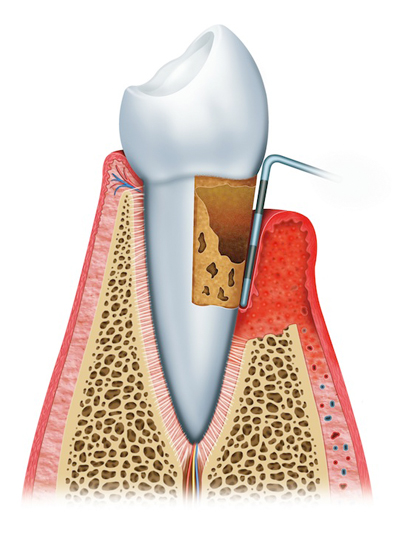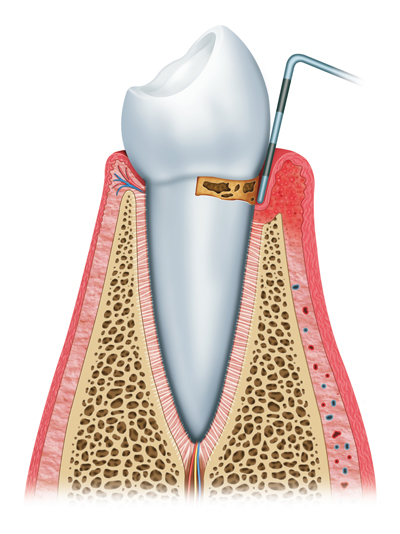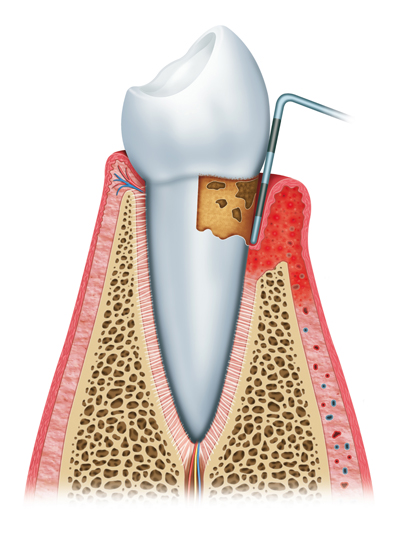Gum disease is a chronic oral infection caused by the bacteria that live in the plaque on your teeth. If you neglect to brush and floss properly, the bacteria thrive, infecting your gum tissue which results in periodontal disease. If you have been experiencing symptoms of gum disease, schedule a consultation to determine the right treatment for you.

Stage 1: Gingivitis
In this stage, the bacteria have just infected your gum tissue. Gingivitis begins with mild symptoms, such as gum inflammation and redness, or gums that bleed when brushing or flossing. Gingivitis is the earliest stage of gum disease. Any damage that has occurred at this point can be easily reversed with immediate treatment.

Stage 2: Periodontitis
Gingivitis can quickly progress to periodontitis. During this stage, the infection damages the connective fiber and bone that support your teeth. The gum tissue that normally fits snugly around your teeth will pull away, forming wide pockets and accumulating even more bacteria. Your gum tissue will wear away, marring the appearance and health of your smile. Tooth sensitivity and bad breath are additional symptoms that you may develop during periodontitis.

Stage 3: Advanced Periodontitis
Without treatment, periodontitis turns into advanced periodontitis. In this final stage, the infection will severely damage the structures that support your teeth. The periodontal pockets will grow even wider while your gums recede even farther. Your teeth will begin to shift and move, unstable without the aid of your gum tissue and bone. Advanced periodontitis must be treated or the infection will continue to progress, spreading throughout your mouth until tooth loss or bone loss occur.
